On the heels of last week's release of the EPA's updated risk assessment regarding the potential impacts of mining operations in the Bristol Bay watershed, the University of Alaska Anchorage's Institute of Social and Economic Research has released the findings of a study which estimate the annual value of Bristol bay's salmon fishery to be 1.5 billion dollars. The study was performed at the request of the Bristol Bay Regional Seafood Development Association, as part of an effort to increase the amount of data available to individuals and organizations undertaking the task of evaluating the feasibility of large scale mining, such as Pebble Mine, at the headwaters of the prolific Nushagak and Kvichak rivers.
The valuation figures produced by the study take into account commercial harvesting, processing, and retailing Bristol Bay salmon and the multiplier effects of these activities. The study does not include the economic value of the sport-fishing industry in Bristol Bay, which previous studies have estimated to be around $60 million annually.
The report by UAA also noted the importance of the economic impact of Bristol Bay's wild salmon fishery to other geographic regions of the United States, particularly the Pacific Northwest, where the report states most of the commercial fishing companies that operate in Bristol Bay are based. It details that "The Bristol Bay salmon industry is a major part of the broader Alaska and Pacific Northwest seafood industry, and pays for an important share of the fixed costs of many fishing and processing operations. Without the Bristol Bay salmon industry, fixed costs would be higher and profits lower in the rest of the seafood industry. The Bristol Bay salmon industry is a major supporter of infrastructure and utilities in the Bristol Bay region, a major taxpayer, and a very important source of local jobs and income."
Though the yet-to-be-proposed Pebble Mine deposit has be valued at an estimated $500 billion dollars, opponents of the mine are likely to point out that -- if the Pebble deposit were mined to that extent - that value would likely be realized over a term of 75 years or more (around $6.6 billion per year) and is a one-time, non-renewable resource with potentially devastating impacts to the natural resources of Bristol Bay. Those natural resources, specifically the Bristol Bay wild salmon fishery's valuation of $1.5 billion per year would, if properly managed, carry on indefinitely as an entirely renewable and perpetual resource.
The EPA is currently (through May 31, 2013) accepting comments and opinions from the public regarding the establishment of large-scale, open pit mining at the headwaters of Bristol Bay's Nushagak and Kvichak rivers, the two largest sockeye salmon producing rivers in the world. To voice your opinion, visit the EPA's web site to enter your comment online.




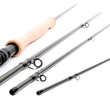
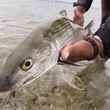

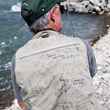



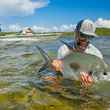
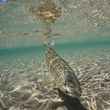



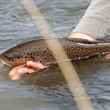
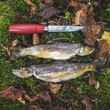








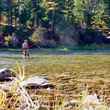




Comments
ginkthefly replied on Permalink
The math doesn't even make sense. 1.5 billion per year FOREVER vs. 6.6 billion per year for 75 and it's done? No thanks.
Not to mention, that 6.6 billion is going straight into the pockets of two FOREIGN mining companies. We're going to jeopardize one of the world's greatest natural resources, one found on US soil, for two non-US companies? Please.
Jon Maakestad replied on Permalink
Is anyone looking at the effects of Fukushima radiation on the Salmon population. Look at the Salmon migration in the Pacific. They swim right through the plume from Fukushima. Fukushima has NEVER been under control since March 2011. The Pacific has been receiving radioactive water for 2 1/2 years. Is anyone testing the fish? Now would be a good time to start.
Pages